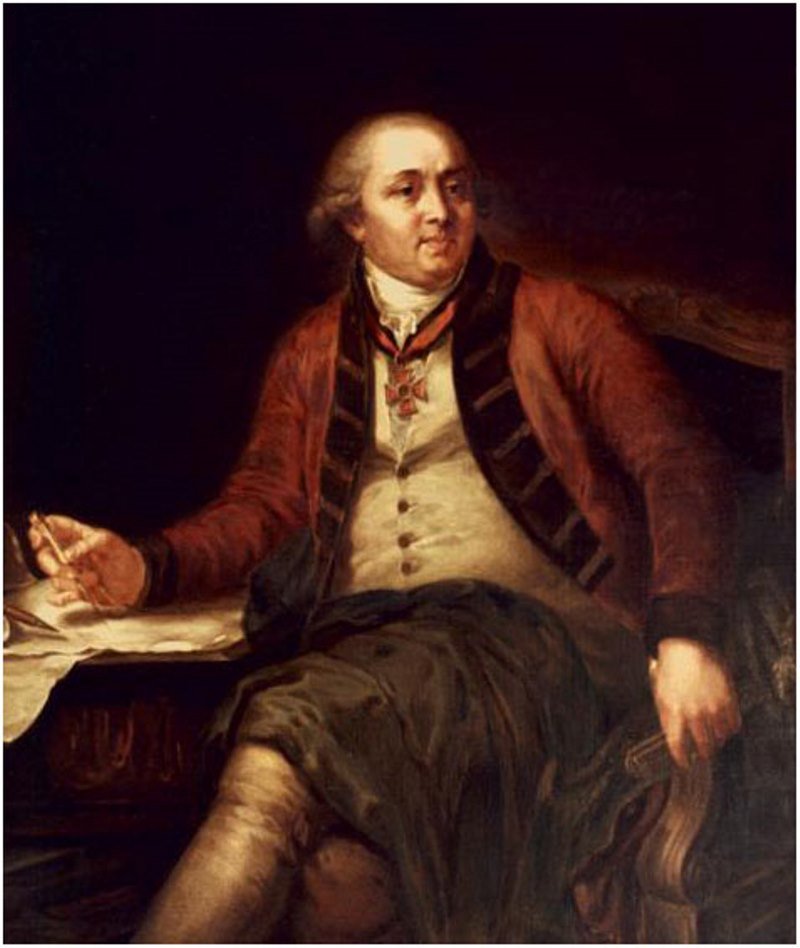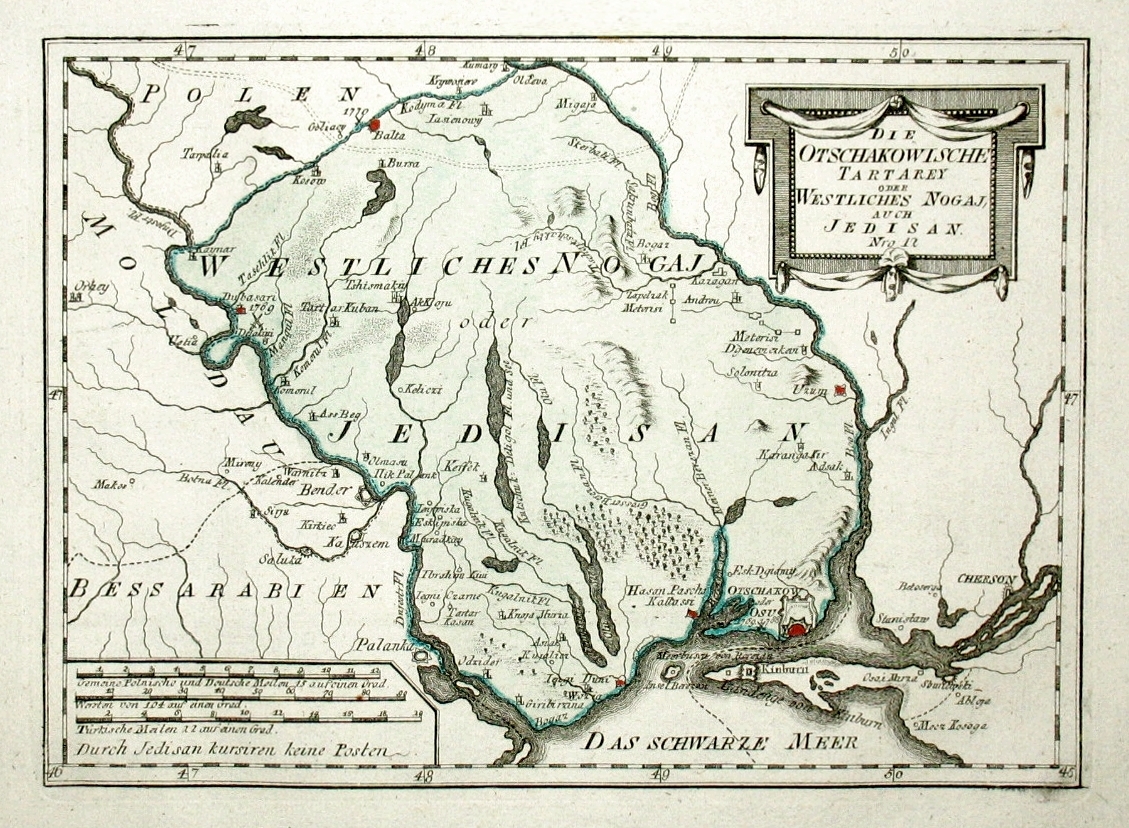|
Ivan Starov
Ivan Yegorovich Starov (russian: Ива́н Его́рович Старо́в) (23 February 1745 – 17 April 1808) was a Russian architect from St. Petersburg who devised the master plans for Yaroslavl, Voronezh, Pskov, Dnipro, Mykolaiv, and many other towns in Russia and Ukraine. His radial urban master plan for Yaroslavl (1778), cleverly highlighting dozens historic churches and towers, is recognized as one of the World Heritage Sites. Starov was one of the first graduates of the Moscow University College (1755–1758) and of the Imperial Academy of Arts (1758–1762). He continued his education in Paris (1762–1767) and Rome (1767–1768), becoming apprenticed to Charles De Wailly and other fashionable architects of his day. Back in Russia, he delivered lectures in the Academy of Arts, which nominated him academician (1769) and professor (1785). Starov held the post of the principal architect of St. Petersburg between 1772 and 1774. After that, he ... [...More Info...] [...Related Items...] OR: [Wikipedia] [Google] [Baidu] |
Ivan Starov
Ivan Yegorovich Starov (russian: Ива́н Его́рович Старо́в) (23 February 1745 – 17 April 1808) was a Russian architect from St. Petersburg who devised the master plans for Yaroslavl, Voronezh, Pskov, Dnipro, Mykolaiv, and many other towns in Russia and Ukraine. His radial urban master plan for Yaroslavl (1778), cleverly highlighting dozens historic churches and towers, is recognized as one of the World Heritage Sites. Starov was one of the first graduates of the Moscow University College (1755–1758) and of the Imperial Academy of Arts (1758–1762). He continued his education in Paris (1762–1767) and Rome (1767–1768), becoming apprenticed to Charles De Wailly and other fashionable architects of his day. Back in Russia, he delivered lectures in the Academy of Arts, which nominated him academician (1769) and professor (1785). Starov held the post of the principal architect of St. Petersburg between 1772 and 1774. After that, he ... [...More Info...] [...Related Items...] OR: [Wikipedia] [Google] [Baidu] |
Russian Academy Of Sciences
The Russian Academy of Sciences (RAS; russian: Росси́йская акаде́мия нау́к (РАН) ''Rossíyskaya akadémiya naúk'') consists of the national academy of Russia; a network of scientific research institutes from across the Russian Federation; and additional scientific and social units such as libraries, publishing units, and hospitals. Peter the Great established the Academy (then the St. Petersburg Academy of Sciences) in 1724 with guidance from Gottfried Leibniz. From its establishment, the Academy benefitted from a slate of foreign scholars as professors; the Academy then gained its first clear set of goals from the 1747 Charter. The Academy functioned as a university and research center throughout the mid-18th century until the university was dissolved, leaving research as the main pillar of the institution. The rest of the 18th century continuing on through the 19th century consisted of many published academic works from Academy scholars and a few ... [...More Info...] [...Related Items...] OR: [Wikipedia] [Google] [Baidu] |
Russian Architecture
The architecture of Russia refers to the architecture of modern Russia as well as the architecture of both the original Kievan Rus’ state, the Russian principalities, and Imperial Russia. Due to the geographical size of modern and imperial Russia, it typically refers to architecture built in European Russia, as well as European influenced architecture in the conquered territories of the Empire. The vernacular architecture stems from wooden construction traditions, and monumental masonry construction started to appear during the Kievan Rus’ era in what is now modern Ukraine. After the Mongol invasion of Rus, the Russian architectural trajectory continued in the principalities of Novgorod, Vladimir-Suzdal, Pskov, Muscovy, and the succeeding states of the Tsardom of Russia. Much of the early standing architectural tradition in Russia stems from foreign influences and styles. Among the characteristic styles present in Russian architecture are the Byzantine revival style ... [...More Info...] [...Related Items...] OR: [Wikipedia] [Google] [Baidu] |
Neoclassicism
Neoclassicism (also spelled Neo-classicism) was a Western cultural movement in the decorative and visual arts, literature, theatre, music, and architecture that drew inspiration from the art and culture of classical antiquity. Neoclassicism was born in Rome largely thanks to the writings of Johann Joachim Winckelmann, at the time of the rediscovery of Pompeii and Herculaneum, but its popularity spread all over Europe as a generation of European art students finished their Grand Tour and returned from Italy to their home countries with newly rediscovered Greco-Roman ideals. The main Neoclassical movement coincided with the 18th-century Age of Enlightenment, and continued into the early 19th century, laterally competing with Romanticism. In architecture, the style continued throughout the 19th, 20th and up to the 21st century. European Neoclassicism in the visual arts began c. 1760 in opposition to the then-dominant Rococo style. Rococo architecture emphasizes grace, ornam ... [...More Info...] [...Related Items...] OR: [Wikipedia] [Google] [Baidu] |
Fontanka Embankment
The Fontanka Embankment (russian: Набережная реки Фонтанки) is a street in Saint Petersburg that follows the course of the Fontanka River from its origin as it diverges from the Neva River up to its confluence with the Great Neva River, Great Neva. In 1762–1769 the general plan of city development was developed by the State Special Committee, headed by Aleksei Kvasov. Following this plan, in the 1780s the shores were imbanked in granite by architect Giacomo Quarenghi. The Fontanka Embankment was used as a border of Saint Petersburg central part. Nowadays the embankment serves as a motorway, it was reconstructed in the early 1990s, then in 2016–2019. It has a status of cultural heritage object. Total length of the left side embankment is 6.4 km, right - 5.7 km. Numerous palaces and historical sites are located on this street. Landmarks and notable buildings *The Summer Garden. *Saint Michael's Castle, built in 1797-1801 by Vasily Bazhenov and Vincenzo B ... [...More Info...] [...Related Items...] OR: [Wikipedia] [Google] [Baidu] |
Vasilyevsky Island
Vasilyevsky Island (russian: Васи́льевский о́стров, Vasilyevsky Ostrov, V.O.) is an island in St. Petersburg, Russia, bordered by the Bolshaya Neva and Malaya Neva Rivers (in the delta of the Neva River) in the south and northeast, and by Neva Bay of the Gulf of Finland in the west. Vasilyevsky Island is separated from Dekabristov Island by the Smolenka River. Together they form the territory of Vasileostrovsky District, an administrative division of Saint Petersburg. Situated just across the river from the Winter Palace, it constitutes a large portion of the city's historic center. Two of the most famous St. Petersburg bridges, Palace Bridge and Blagoveshchensky Bridge, connect it with the mainland to the south. The Exchange Bridge and Tuchkov Bridge across the Malaya Neva connect it with Petrogradsky Island. Vasilyevsky Island is served by Vasileostrovskaya and Primorskaya stations of Saint Petersburg Metro ( Line 3 ). There are plans to buil ... [...More Info...] [...Related Items...] OR: [Wikipedia] [Google] [Baidu] |
Alexander Nevsky Lavra
Saint Alexander Nevsky Lavra or Saint Alexander Nevsky Monastery was founded by Peter I of Russia in 1710 at the eastern end of the Nevsky Prospekt in Saint Petersburg, in the belief that this was the site of the Neva Battle in 1240 when Alexander Nevsky, a prince, defeated the Swedes. But the battle took place about away from that site. "On April 5, 1713, in St. Petersburg, in the presence of Peter I, the wooden Church of the Annunciation was consecrated. This day is considered the official founding date of the Alexander Nevsky Lavra." (April 5, 1713 Gregorian was March 25 Julian, feast of the Annunciation.) "The relics of St. Alexander Nevsky were solemnly transferred from Vladimir to the new capital of Russia September 12, 1724, by decree of Peter the Great." (It was August 30 Julian, or September 10 Gregorian; however, since the Russian Orthodox Church still follows the Julian calendar, the transfer of the relics is celebrated on August 30 Julian, which corresponds to Sep ... [...More Info...] [...Related Items...] OR: [Wikipedia] [Google] [Baidu] |
Lazarevskoe Cemetery
Lazarevskoe Cemetery (russian: Лазаревское кладбище) is a historic cemetery in the centre of Saint Petersburg, and the oldest surviving cemetery in the city. It is part of the Alexander Nevsky Lavra, and is one of four cemeteries in the complex. Since 1932 it has been part of the , which refers to it as the Necropolis of the XVIII century (russian: некрополь XVIII века). It covers 0.7 hectares. The cemetery came into existence with the establishment of the city of Saint Petersburg by Peter the Great in the early eighteenth century. With the death of Peter's sister, Natalya Alexeyevna, in 1716, Peter instructed that she be buried in the grounds of the Alexander Nevsky Monastery, which was under development at that time. In 1717 Natalya Alexeyevna was interred in the Church of St Lazarus, the first stone building in the monastery complex, and from which the cemetery took its name. The location soon became the burial site for other members of Peter's f ... [...More Info...] [...Related Items...] OR: [Wikipedia] [Google] [Baidu] |
Inhul
The Inhul ( uk, Інгул) is a left tributary of the Southern Bug (Boh) and is the 14th longest river of Ukraine. It flows through the Kirovohrad and Mykolaiv regions. It starts near the village of Rodnykivka, Oleksandriia Raion in Kirovohrad Oblast (Central Ukraine), flowing south towards the Southern Bug at Mykolaiv, which is north (up river) from where the Southern Bug empties into the Black Sea. The Inhul River is long. The river valley is mostly trapezium-like with a width of up to 4 km and a depth of up to 60 meters. At the upper stream it has a narrow winding channel that cuts through the Dnieper Upland, and its rocky banks show granite and gneiss; at the middle and lower stream after entering the Black Sea Lowland, it widens up to 30 meters and over. The river freezes over in December and thaws sometime in March. Among major cities on the river are Kropyvnytskyi and Mykolaiv. See also * Inhul River Park References External links * Sukhenko, O., Domara ... [...More Info...] [...Related Items...] OR: [Wikipedia] [Google] [Baidu] |
Southern Bug
, ''Pivdennyi Buh'' , name_etymology = , image = Sunset S Bug Vinnitsa 2007 G1.jpg , image_size = 270 , image_caption = Southern Bug River in the vicinity of Vinnytsia, Ukraine , map = PietinisBugas.png , map_size = 270px , map_caption = Southern Bug through Ukraine , pushpin_map = , pushpin_map_size = , pushpin_map_caption= , subdivision_type1 = Country , subdivision_name1 = Ukraine , subdivision_type2 = , subdivision_name2 = , subdivision_type3 = Oblast , subdivision_name3 = , subdivision_type4 = , subdivision_name4 = , subdivision_type5 = , subdivision_name5 = , length = , width_min = , width_avg = , width_max = , depth_min = , depth_avg = , depth_max = , discharge1_location= , discharge1_min = , discharge1_avg = 108 m3/s , discharge1_max = , source1 = , source1_location = ... [...More Info...] [...Related Items...] OR: [Wikipedia] [Google] [Baidu] |
Szlachta
The ''szlachta'' (Polish: endonym, Lithuanian: šlėkta) were the noble estate of the realm in the Kingdom of Poland, the Grand Duchy of Lithuania, and the Polish–Lithuanian Commonwealth who, as a class, had the dominating position in the state, exercising extensive political rights and power. Szlachta as a class differed significantly from the feudal nobility of Western Europe. The estate was officially abolished in 1921 by the March Constitution."Szlachta. Szlachta w Polsce" ''Encyklopedia PWN'' The origins of the ''szlachta'' are obscure and the subject of several theories. Traditionally, its members owned land (allods), [...More Info...] [...Related Items...] OR: [Wikipedia] [Google] [Baidu] |







.jpg)

